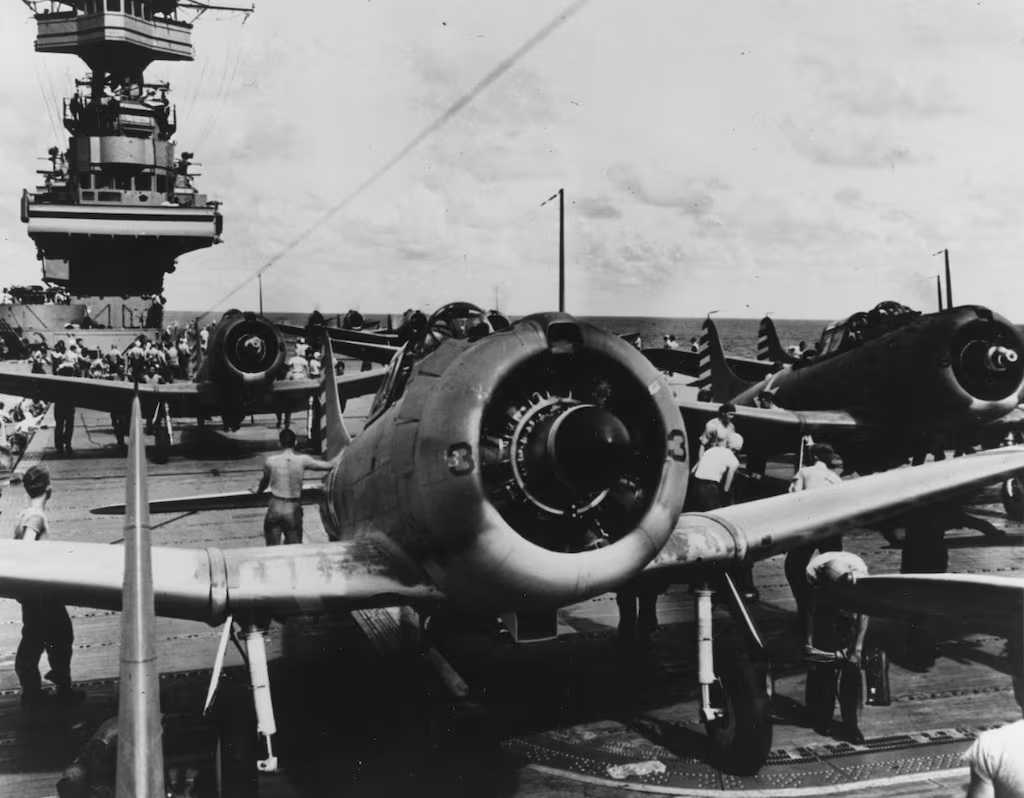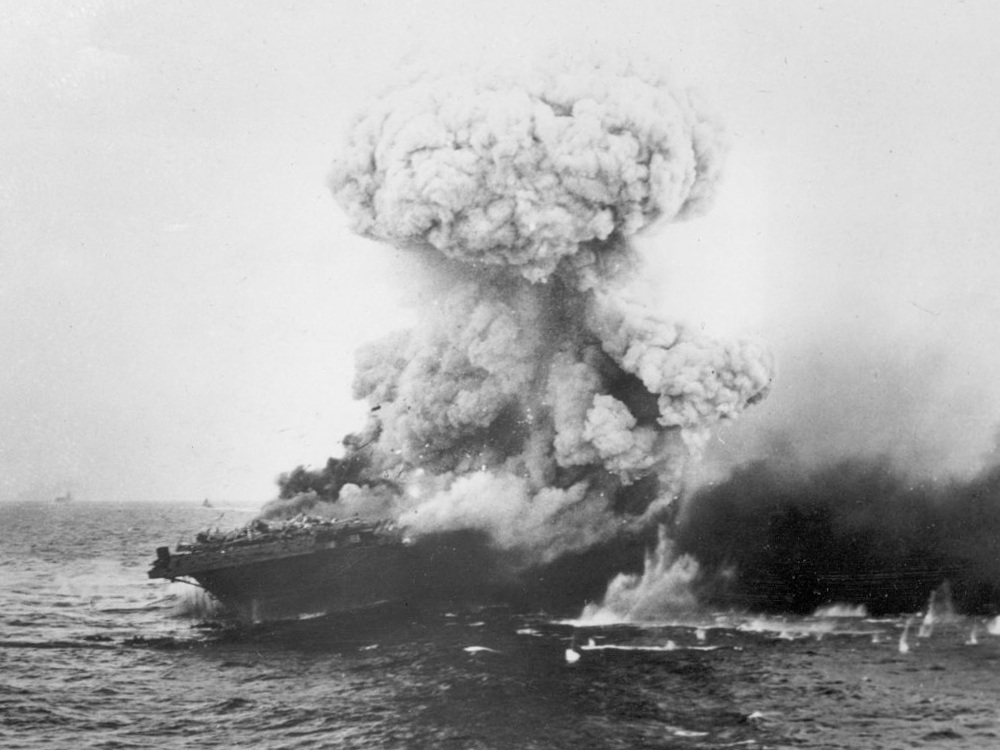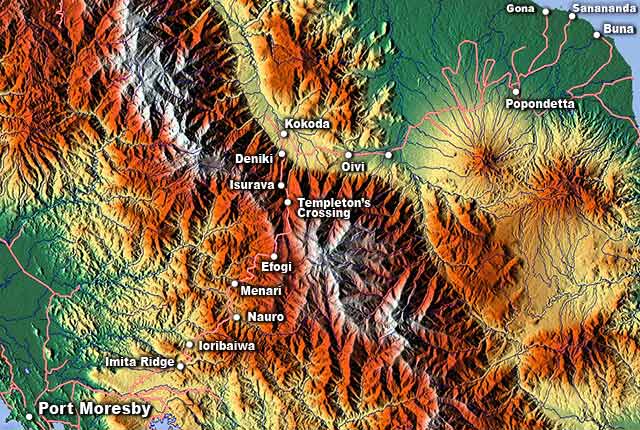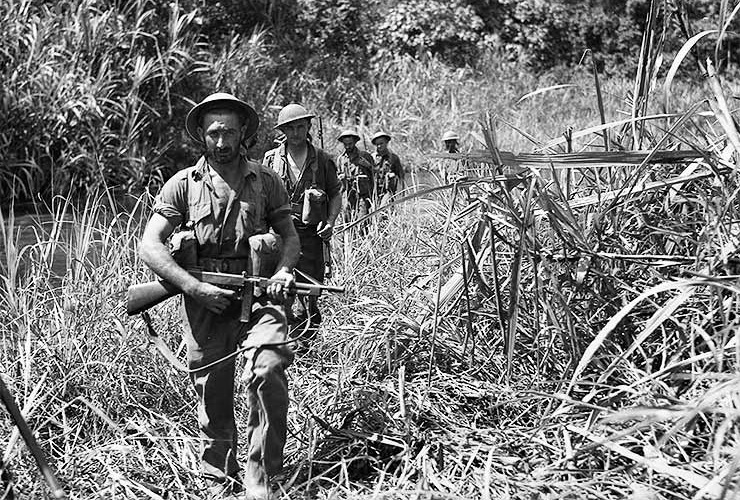Papua New Guinea and WWII… The invasion of PNG began on the 21st January 1942. When the Japanese Imperial forces seized Kavieng in New Ireland and soon after Rabaul in New Britain. The invasion, coming as it did just seven weeks after their devastating surprise attack on Pearl Harbour, turned Papua New Guinea into key battleground in the war in the Pacific.
Rabaul, with its expansive natural harbor and numerous airfields, was of immense strategic value to the Japanese during World War II. They rapidly established it as their principal base in the South Pacific. Transforming it into their most heavily fortified stronghold in the region.
To reinforce its defenses, the Japanese constructed extensive military infrastructure, including barracks and support facilities. While digging kilometers of tunnels to protect troops and resources from Allied air attacks. By 1943, Rabaul was home to some 110,000 Japanese troops.

The Battle of the Coral Sea
In May 1942, with Rabaul established as their operational hub. The Japanese launched Operation Mo to invade and capture Port Moresby, the capital of Papua New Guinea.
Together with Tulagi, then the capital of the Solomon Islands. Both were strategic locations that, if captured, would solidify Japan’s dominance in the South Pacific.
The operation involved major units of the Japanese Navy, including two large fleet aircraft carriers and a light aircraft carrier.
The carriers were tasked with providing air cover for the invasion forces. However, through signals intelligence, the U.S. Navy were aware of the Japanese plan.
Two carrier task forces, alongside a joint Australian-U.S. cruiser force, were dispatched to intercept the offensive.
The ensuing conflict became known as the Battle of the Coral Sea. And was the first naval engagement in history where opposing fleets neither sighted nor fired directly upon one another.


Instead, the engagement was fought entirely through over the horizon airstrikes, launched from aircraft carriers.
Both sides suffered significant losses in aircraft, along with damage or destruction to their carriers.
The Allies endured heavier losses and were forced to withdraw from the operational area, making the battle a tactical success for the Japanese.
However, strategically, the battle was a victory for the Allies. As the high number of aircraft lost by the Japanese meant they could no longer support their planned invasion of Port Moresby, forcing them to recall the invasion fleet.
This marked the first major instance in WWII where a Japanese advance had been halted, delivering a crucial psychological boost to Allied forces against what had seemed an unstoppable enemy.
Furthermore, the disruption of Japanese plans proved critical, delaying the Port Moresby invasion and setting the stage for the pivotal Battle of Midway a month later.
Papua New Guinea and WWII – The Japanese New Guinea Campaign
In June 1942, the Japanese suffered a devastating defeat at the Battle of Midway, together with the loss of four aircraft carriers, which forced them to abandon trying to take Port Moresby by naval attack. But the capture of Moresby remained a high priority as it would enable them to isolate Australia and attack vital Allied bases in the north of the country.
In July they launched their New Guinea campaign with a two-pronged attack on the capital. Firstly with an attempt to capture Milne Bay with an amphibious assault. Then with a landing at Buna and Gona on the north side of the island from where they would cross the rugged Owen Stanley Range to the capital using the Kokoda Track.
Based on vague explorer accounts, the Japanese perceived the Kokoda Track as a feasible corridor from Buna to Port Moresby, that was suitable for a swift and decisive attack.
The reality though was that the Kokoda Track was (and still is…) a rough and winding 96km long foot-trail that traversed the mountains of the Owen Stanleys.
The track reached altitudes of nearly 2,200m, rising and falling steeply through rugged mountain terrain. Which significantly increased the effective distance and difficulty of travel.
The vegetation is largely dense jungle, with hot and humid conditions prevailing at lower altitudes. And frequent heavy rainfall creating slippery trails and muddy quagmires.
The higher elevations were cold, especially at night, compounding the difficulties faced by ill-prepared soldiers.


Papua New Guinea and WWII – Kokoda
At the end of July 1942, approximately 5,000 Japanese troops set out from Buna on a grueling forced march across the Kokoda Trail, intending to capture Port Moresby. They carried minimal supplies, banking on swift progress to secure their objective. Initially, their advance was rapid, facing little resistance from the 420 untrained and ill-equipped Australian recruits defending the trail.
Within days they had captured the strategic village of Kokodo and its important airfield. But as they moved higher into the Owen Stanleys things got progressively much harder. The terrain got tougher, their supplies dwindled, resupplies did not arrive, disease and dystentry took an increasing toll. Plus the Australian resistance got better and stronger.
Despite immense hardships, including starvation so severe that cannibalism became a grim reality, the Japanese pressed forward. By mid-September, they had crossed the most challenging sections of the Owen Stanleys and reached Ioribaiwa Ridge. Just 40 kilometers from Port Moresby.

However, by this time the tide of war had turned against them.
Their defeat in the Battle of Milne Bay and catastrophic troop losses in the Solomon Islands’ Battle of Guadalcanal left Japan’s Pacific campaign in disarray.
Consequently, the Japanese were ordered to retreat back over the Owen Stanley Range.
The retreat was even more devastating than the advance.
Starving, disease-ridden, and pursued relentlessly by reinforced and highly motivated Australian troops, many Japanese soldiers perished along the trail.
Those who managed to return to Buna faced a final, crushing defeat at the Battle of Buna in January 1943. Marking the decisive end of Japan’s New Guinea campaign.
Why Kokoda Matters
The Kokoda Track Campaign stands as a defining chapter in Australian military history. Embodying the resilience, courage, and determination of those who fought to defend their homeland. For Australia, it represents not just a military victory but also a moment of national unity and identity forged under extreme adversity.
Equally significant is Papua New Guinea’s vital role in the war effort. The local population’s contributions, including acting as guides, carriers, and providing support to Allied forces, were crucial to the campaign’s success. Their bravery and sacrifice are honored as an integral part of the shared history between Papua New Guinea and Australia.
Today, the legacy of WWII is etched into Papua New Guinea’s landscape, with numerous relics such as aircraft wrecks, shipwrecks, and battlefields now serving as poignant historical sites. These remnants draw historians, veterans, and divers from around the world, offering a tangible connection to the events of the past.
For many Australians, the Kokoda Track holds deep emotional significance. Walking the track has become a symbolic rite of passage, a way to honor the sacrifices of those who fought and to reflect on the enduring themes of resilience and camaraderie that define this iconic campaign.
Back To: Understanding Papua New Guinea
